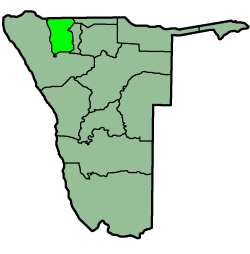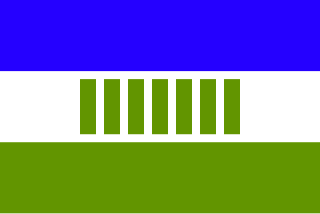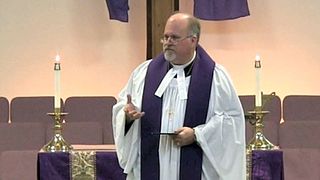
Oshana is one of the fourteen regions of Namibia, its capital is Oshakati. The name Oshana describes the most prominent landscape feature in the area, namely the shallow, seasonally inundated depressions which underpin the local agro ecological system. Although communications are hindered during the rainy season, the fish which breed in the oshanas provide an important source of dietary protein.
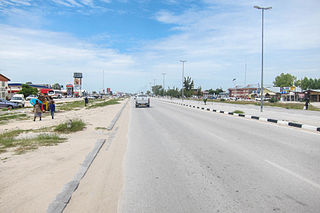
Ondangwa is a town of 23,000 inhabitants in the Oshana Region of northern Namibia, bordering Oshikoto Region. Ondangwa was first established as a mission station of the Finnish Missionary Society in 1890. In 1914 it became a local seat of government.
The Diocese of Namibia is part of the Anglican Church of Southern Africa, which is itself part of the Anglican Communion. The diocese, which covers the whole country of Namibia, was originally known as the Diocese of Damaraland. Most of the Anglicans in Namibia live in Ovamboland in the north of the country and speak the Kwanyama language.
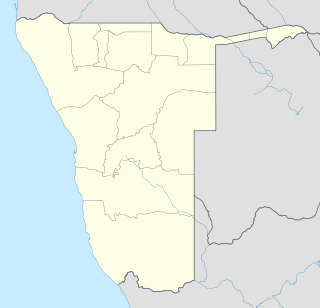
Ongwediva is a town in the Oshana Region in the north of Namibia. It is the district capital of the Ongwediva electoral constituency. As of 2010 it had 27,000 inhabitants and covered 4,102 hectares of land. Ongwediva has seven churches, two private schools and 13 government-run schools. Most of the inhabitants speak Oshiwambo.
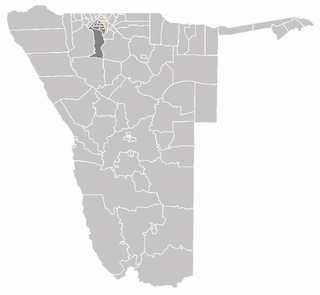
Okaku Constituency is an electoral constituency in the Oshana Region of Namibia. It has 19,262 inhabitants, its district capital is the settlement of Okaku.

Martti (Martin) Rautanen was the pioneer of the Finnish Mission in Ovamboland, Namibia.

Omagongati is a village situated in the northern part of Namibia in Ondangwa Rural Constituency, Oshana region, it borders the Kingdom of Ondonga from that of Uukwambi, and it is under the leadership of the headman Mr. Noah Nakwfila, well known as Kapinya. Omagongati is as far from Ondangwa as it is from Oshakati, roughly 17 km away and 11km from Ongwediva. It is surrounded by numerous villages, namely Ashaaga, Onelago, Uudhengelo and Okatha, with the nearest town Eheke which has a high school and more improved infrastructures.
Ekuku is a village located nearly 3 kilometres (1.9 mi) north of Oshakati in Okatana Constituency, Oshana Region, Namibia. The mayor of the village is Leevi Shipepe ya Shipepe, and its population is about 3,000.
Iipumbu Ya Tshilongo (1875–1959) was king of the Uukwambi, an Ovambo clan in Namibia, from 1907 to 1932. He is one of the national heroes of Namibia.
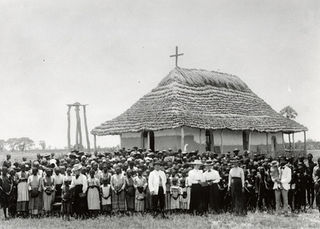
The Finnish Evangelical Lutheran Mission is a Lutheran missionary society formed on January 19, 1859, in Helsinki, Finland. It is one of seven organisations of the Evangelical Lutheran Church of Finland (ELCF) that conduct missionary work. Its first deployments outside Finland were made to Ovamboland, an area that today is cut by the Angola-Namibian border.
Nakayale, also known as Nakayale Keengulu is a village in northern Namibia near Outapi in Omusati Region situated 86km northwest of Oshakati and 4km from Outapi. It is in Anamulenge Constituency. The village normally receives an annual average rainfall of 440 millimetres (17 in), although in the 2010/2011 rainy season 723 millimetres (28.5 in) were measured.
Onimwandi is a settlement in the Oshana Region in northern Namibia. It belongs to the Oshakati West electoral constituency and is situated 5 kilometres (3.1 mi) away from Oshakati on the left hand side of the main road on the way to Okahao. The headman of the Oniimwandi village is Mr Erastus Amupolo and his assistant is Mr Juuda Amupolo.
Onandjokwe State Hospital, until 2016 Onandjokwe Lutheran Hospital, is the oldest hospital in the northern part of Namibia. It was built in 1911 by the Finnish Missionary Society under the leadership of Selma Rainio. The hospital was operated by the Evangelical Lutheran Church in Namibia (ELCIN) via Lutheran Medical Services until 2016, when the Government of Namibia took over.

Mpungu is a settlement and a former mission station of the Finnish Missionary Society in the Mpungu Constituency in the Kavango West Region in Northern Namibia. It is located ca. 40 km south-west of Nkurenkuru, in the inland, as opposed to other former Finnish mission stations, which were located along the Kavango River. Today a tarred highway from Ovamboland to Kavango connects Mpungu to other places in northern Namibia.

Omandongo is an unpopulated place in the Onayena Constituency in the Oshikoto Region in Northern Namibia, and the region which used to be called Ovamboland.
Ogongo is a settlement in the Omusati Region, in the central North of Namibia. Its neighbouring places include Outapi, Elim and Oshikuku.

Engela is an Ovambo settlement in the Ohangwena Region in northern Namibia. Formerly situated in the Oukwanyama area it is since 2004 part of the town Helao Nafidi, although it still maintained its own village council until the 2015 local authority election. It is one of the more important establishments of the Evangelical Lutheran Church in Namibia (ELCIN) in the area. It started as a mission station of the Finnish Missionary Society. Today, it is the centre of the Engela Constituency.

Okatana is a village in the Ohangwena Region in the north of Namibia in the Uukwambi tribal area. It is the centre of the Okatana Constituency.
Albin Savola was a Finnish priest and missionary, who served as the first Finnish missionary Martti Rautanen, a close colleague in Ovamboland and published literature in oshindonga language.


